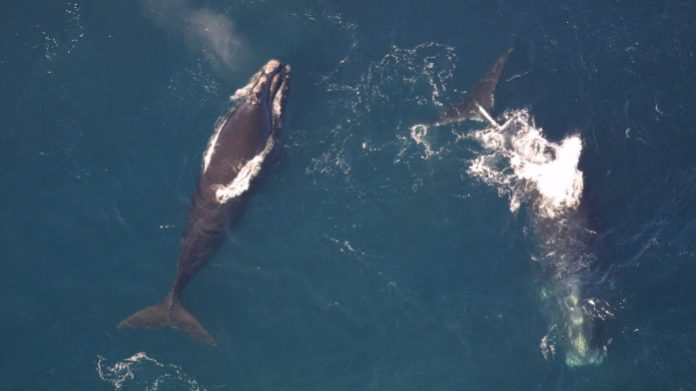Twelve North Atlantic right whales were found dead in the Gulf of St. Lawrence in 2017. That’s 2.6% of an estimated global population of just 458. If we compared this to the global human population, it would be the equivalent of almost 200 million people dying.
And now we know that humans were the cause.
A report co-produced by the Canadian Wildlife Health Cooperative, the Marine Animal Response Society, and the Department of Fisheries and Oceans Canada (DFO), describes the results of six necropsies performed on the dead whales and reveals that they died due to human activities – either by colliding with ships or getting tangled up in fishing gear.
Although the need for such a report is tragic, the analysis that was performed is actually pretty cool.
A whale catalogue
First, the dead whales were identified and matched to known whales in the right whale catalogue. This catalogue, maintained by the New England Aquarium in Boston, houses over 61,000 photographs of right whales, gathered by various people since as far back as 1935. Photographs are grouped based on the pattern of rough skin patches on the whales heads called “callosities” that are sort of like a right whale fingerprint. Right now, the catalogue has documented over 650 whales that you can browse through or search for, although many of them, like the ones from this study, are known to be dead.
As researchers get more information about each whale like DNA, paternity, location, or blubber measurements, the information is added to their catalogue profile.
For the necropsied whales that were too decomposed to be identified based on head markings, DNA samples were sent to the Trent University Wildlife Forensic DNA Lab, where they were compared to the known samples in the catalogue. In the end, five of the six whales were matched to ones in the catalogue – only one remained unidentified.
Turning back time
Next, in order to estimate where the whales may have gotten hit or tangled, the DFO used a 3D computer model of the ocean to hindcast (opposite of forecast) where the floating whales had come from. The model uses a mathematical algorithm to calculate the whale’s trajectories backward in time from where they were found and takes into account factors like river runoff and wind speed. The hindcast revealed that most of the whales came from the western side of the southern Gulf of St. Lawrence.
Unfortunately, despite all this information, the exact cause for the increase in right whale deaths this year is still unknown. Ocean traffic in this area of the St. Lawrence doesn’t seem to be significantly different from 2016 to 2017, and although more right whales have been sighted in the St. Lawrence lately, it is unclear whether this is because they are spending more time there or simply because of increased surveillance efforts.
In addition to the 12 whales found dead this year, another five living whales were observed tangled in fishing gear. A whale rescue team (yes, that’s a thing) managed to untangle two of the whales while one escaped on its own, but the fates of the other two are unknown to date.
It’s clear that we need to step up our protection game.
The North Atlantic right whale is an endangered species protected by the Species at Risk Act (SARA), but critics of SARA say that “withering political interest and weak policy prescriptions” have caused it to underachieve.
According to this new report, more research is needed to identify the spatial and temporal overlap between humans and right whales in the St. Lawrence, so that appropriate protection measures can be put into place.
In the meantime, the DFO has asked fishing and shipping vessels to reduce speed along the Laurentian channel in shipping lanes, be alert for whales, and report any sightings immediately.
Let’s hope another report like this won’t be necessary next year.








































